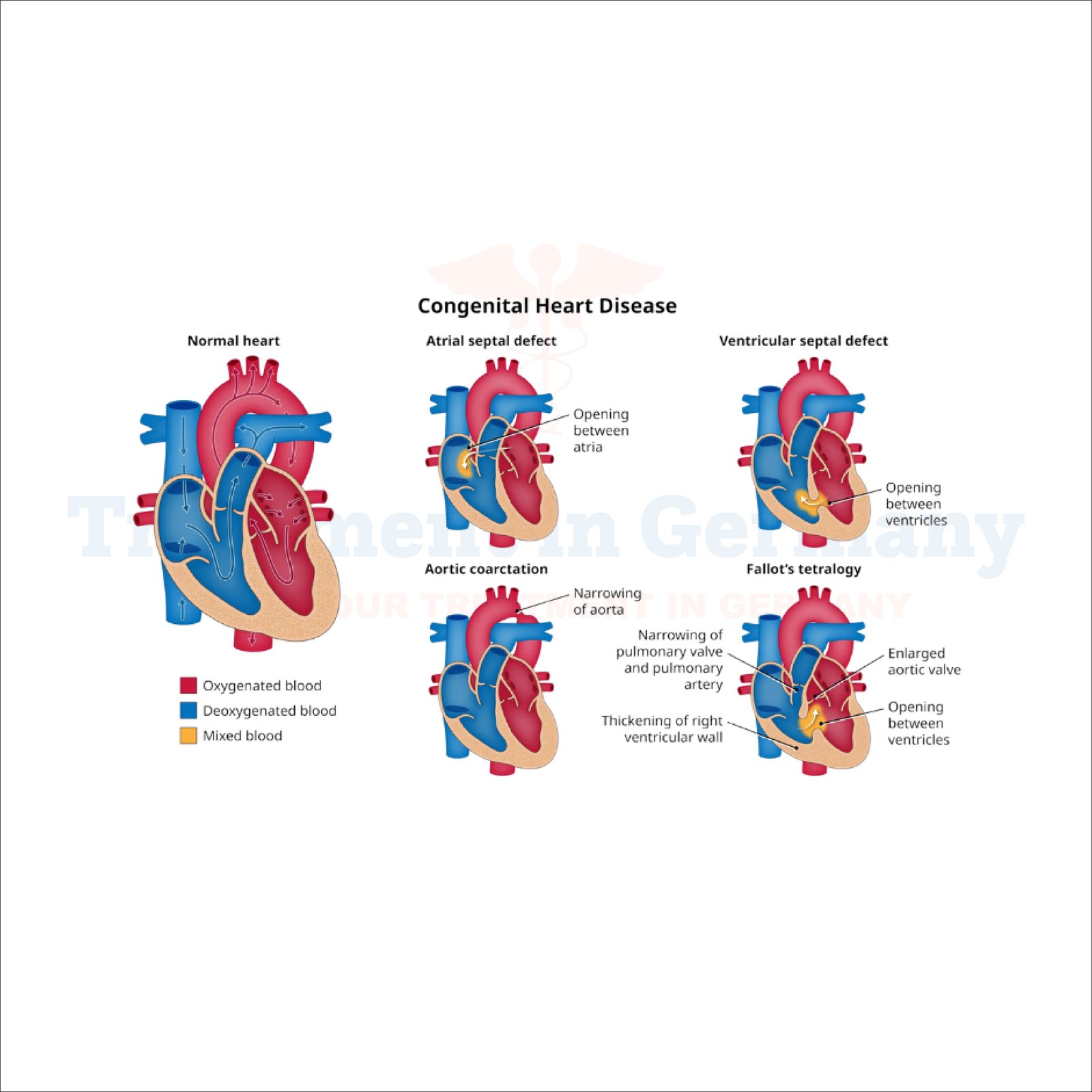Atrial septal defect and ventricular septal defect are among the two congenital types of heart diseases. Even though they are abnormal communications in the heart, it takes place at two different parts of the heart. This results in disturbances in blood flow to severe health complications that will likely result from undiagnosed and untreated lesions.
Understanding these defects will become helpful in the management of symptoms and choice of the best-treatment path. Regardless whether it is an atrial or ventricular defect, it is important to know the role of medical innovations and early diagnosis to present a better outlook.
Mechanism of Atrial Septal Defect
An ASD is a congenital defect in the form of hole in interatrial septum (the wall that separates the two upper chambers of the heart: the atria). Consequently, blood that is rich in oxygen combines with blood that is low in oxygen, leading to inefficiencies in the heart's circulation.
In time, ASD can result in pulmonary hypertension, causing the heart to pump harder than usual. The diagnostic tools that should be used in early diagnosis are a chest X-ray and Electrocardiogram (ECG).
Classification of Atrial Septal Defects
There are various types of ASD. Among them, secundum ASD is the most common, which occurs at the center part of the septum. The other forms include primum ASD, sinus venosus ASD, and others such as coronary sinus ASD which are rarely found. An untreated defect may result in critical heart problems.
What is a Ventricular Septal Defect?
A VSD is a congenital defect that creates an opening within the wall separating the heart's two lower chambers-the ventricles. This develops a hole so oxygen-rich blood flowing from the left ventricle can easily drain back into the right ventricle. The risk factors for VSD include congenital heart disease, some genetic conditions like Down syndrome, and various issues related to pregnancy. Other conditions which sometimes are associated with VSD include aortic coarctation.
Symptoms of Ventricular Septal Defect Symptoms of VSD include shortness of breath, rapid breathing, and poor growth in infants. Adults with VSD may experience fatigue and high blood pressure (hypertension). These symptoms can become life-threatening if not diagnosed through an echocardiogram or right heart catheterization. Detecting VSD early is key to avoiding complications such as heart failure.
Diagnosing Atrial and Ventricular Septal Defects
Diagnostic Tools for Septal Defects
Early detection of septal defects is critical in preventing late-stage complications. One of the most useful diagnostic tools for visualizing the defect and its magnitude is an echocardiogram. Chest X-ray is an additional method that could probably detect abnormal heart structures.
Heart catheterization is also employed to determine the extent of the defect in serious cases. These tests will help doctors figure out the best practice: observation or intervention through surgery.
Management Therapies for ASD and VSD
Non-Surgical Managements
Not every patient suffering from septal defects must undergo surgery. The small ones only need to be monitored with scheduled follow-ups. Some drugs tend to make the symptoms decrease and some complications avoidable. For instance, controlling hypertensive helps ease off the stress of the heart while delaying or preventing any need for surgical intervention.
Surgical Interventions for Larger Defects
Surgery would be required to correct larger defects or if the resulting symptoms by the defect are relatively serious. Large VSDs are usually treated with open-heart surgery while smaller ones, some of the ASDs are managed through minimally invasive means such as transcatheter device closure.
Germany is known to the world in terms of modern procedures regarding heart disease and has been a center of innovative ideas concerning congenital heart disease, making care about septal defects here just first class.
Post-Treatment Follow-Up Care for Septal Defects
The Significance of Follow-Up After Treatment Post-treatment care is lifelong. The patient may be followed through appointments with a cardiologist, who could scrutinize for potential complications, such as pulmonary hypertension or heart failure.
Your healthcare team can use diagnostic aids such as echocardiograms to ensure your heart is in good health. Such lifelong follow-up care helps preserve quality of life and prevents future conditions.
Therapy Innovation for Septal Defects in Germany
Germany is one of the world's leaders when it comes to medical innovation in the field of treating congenital heart defects like ASD and VSD. The used technologies in Germany are advanced, and the techniques they apply are minimally invasive.
This fact makes the treatment in Germany an attractive destination for many patients seeking professional care. All the German hospitals use state-of-the-art facilities that enable abnormal cells along with other problems of a patient's heart to be conducted with advanced procedures, thus encouraging faster recovery times and better outcomes.
👉 Contact us for further information and receive acomplimentary consultation.

.webp)
.webp)
 (1).webp)
 (1).webp)

.webp)
.webp)
 (1).webp)
 (1).webp)
